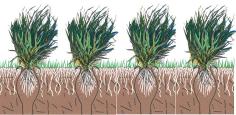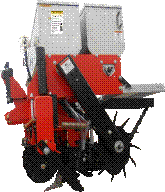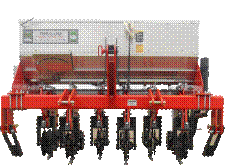

|
Chinese Red Cow Peas In Bahia Grass |

|
Tarver Sales · Folsom, LA 70437 · 800-848-9303 |

|
For late summer grazing, on July 15, 2009, a mixture of Mung beans, soybeans, cow peas and 3 millet varieties was Plant-O-Vated into Bahia sod. Previous year’s experience has shown these can be “mob-grazed” off by November first. Then in the rich, fresh manure, pea vine and bean stalk organic material, late maturing rye grass can be spread over the field and harrowed in with a heavy chain harrow or better yet, bush hog and mulch the organic matter to cover the seed. The rich, mellow sod allows fast rooting of rye grass, and the nitrogen residue is all the nutrients needed to grow the rye grass—a very inexpensive winter pasture. In mid to late September, fields of Bahia and Bermuda (that did not have peas during the year) can be Plant-O-Vated with oats or barley mixed with clover. Immediately after, late maturing rye grass can be broadcast over the oats and barley planting; then harrowed in. Oats and barley or winter wheat can be available for grazing by late October, early November. The slow, emerging rye grass will be ignored while the cattle graze the rows of sweeter plants. The rye grass will be available to graze by the third grazing of the oats and barley. (Late maturing rye grass grows well until early June.) This method provides continuous winter grazing from early fall to early summer. Grazing of the emerging Bahia or Bermuda grasses are then simultaneously grazed with the declining rye grass. |

|
45 days after planting |
|
Mixture of Mung beans, Clay Cow Peas, BMR 106 and 108 Sorghum and Hay King Hybrid Sudan Grass |
|
Plant-O-Vated in Bahia Grass Sod, July 15, 2009. All in one trip. |

